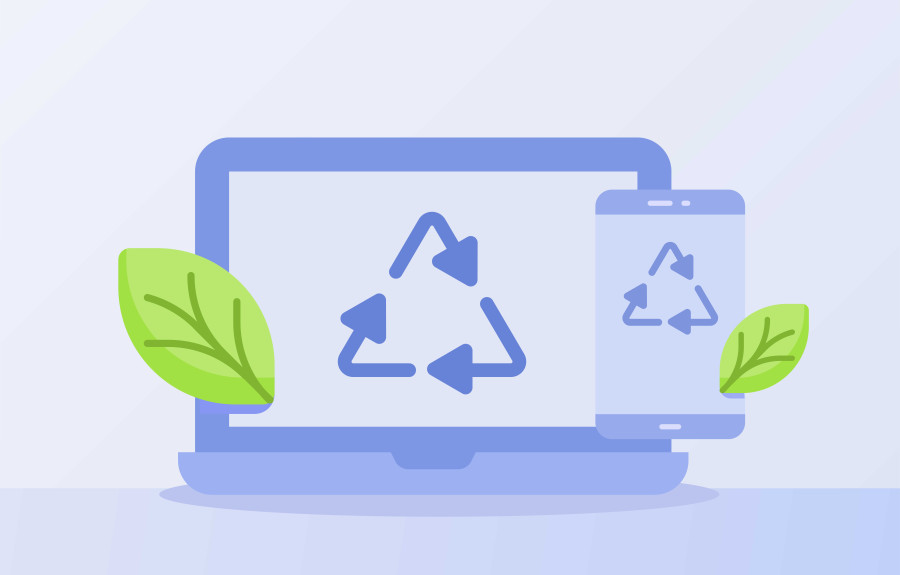Science & Technology
Dust off your old laptops and reuse them
There are many ways that you can squeeze that last remaining bit of life out of your old laptops to help minimise e-waste at your homes.
Prajesh SJB Rana
Ever since the boom of the consumer electronics business, modern households have been equipped with many technological devices. Modern Nepali households these days have necessitated the use of smartphones, routers, laptops, and desktop computers. But among the live devices, blinking away their operations, are the ones that lie forgotten inside storerooms or drawers. Be it through planned obsolescence or excessive use, these lifeless devices have been fueling a very serious e-waste problem—with the world seeing around 53.6 million tons of electrical waste. While electronics have become increasingly difficult to repair over the years, adding to the e-waste problem, there are many ways that you can squeeze that little bit of life out of your old laptops to help minimise that problem at our, the consumers, end. If you have an abandoned laptop that you just forgot about after your upgrade, now would be a nice time to fish them out and try these cool DIY hacks to breathe new life into your old laptops.
Turn your laptop into a media centre for your TV
If you have a decently modern TV without internet capabilities, you can easily turn your old working laptop into a media centre to watch videos online, store local media, or even play some games. First, you need to make sure that both your TV and your laptop have compatible HDMI ports. All you need to do is install a copy of your choice of Home Theater PC (HTPC) software on your laptop, some of the most popular variations would include KODI, Plex, and Emby. The HTPC software is designed for TVs so they’ll look great on your big screen TV. Interface-wise, you could hook up a gaming controller to the laptop and use the controller as a remote or you could also download mouse and keyboard software for your smartphone, hook up your phone and laptop to the same wifi and use your phone as a wireless controller. Apps like Remote Mouse, wifi Mouse, and PC Remote are some of the most famous ones with plenty of other options to choose from. After installing your HTPC, connecting your laptop to a TV, and firing up the software you can access all of your online streaming services on your TV, with your own Android remote as well.
You can now hide your laptop somewhere out of view but if you want to experiment with opening up your device and removing the screen, the flat laptop body is much easier to hide. Just make sure you know what you’re doing before opening up your working laptop.
Using your laptop as a Wi-Fi booster
There is always this annoying little corner of your house where the Wi-Fi is just lousy. Facebook takes hours to load and YouTube fumbles even on 240p. To extend WiFi coverage to these areas, you can reconfigure your old laptop into a makeshift WiFi booster. For that, you will need a working laptop and you will also need to connect your laptop by an ethernet cable (if you have a spare external wireless dongle, you can do this wirelessly as well). Find a spot for your laptop and wire a connection to the laptop. After your computer has connected to the internet, you can use an application, like Virtual Router Plus, Connectify Hotspot, or mHotspot, to create an access point or clone your existing Wi-Fi network through the Repeater mode. If you want to do this wirelessly, you will need two Wi-Fi adaptors, one to receive and one to broadcast. Since your laptop already has a Wi-Fi adaptor inside it, all you need is one more. If you do, you can connect through one of your Wi-Fi adaptors in the Network and Sharing Setting and use the second adaptor on your Hotspot app.
Turn your laptop into a Network Attached Storage (NAS)
Network Attached Storage systems are devices that all clients connected to the same system can access, like local storage for everyone on your home network. If you have a working laptop, you can share a folder on your old laptop and make it accessible by any device on the network, making it easy to transfer files between devices. This can be done natively on Windows by going to the Properties of any drive or folder and navigating to the ‘Sharing’ tab. The ‘Advanced Sharing’ button on this page should open up another dialogue box with the option to turn on sharing. Once you turn sharing on, your shared folder should appear on other Windows devices under ‘Network’ in File Manager, and applications like ES File Manager can access these folders on Android. If you want to turn your laptop into an even more robust NAS, you might want to try using FreeNAS but since FreeNAS requires you to install a new operating system, knowledge about how to do so will make it easier.
Salvage the parts
If you have a non-working laptop, don’t fret, even though your entire system might not work, there might be plenty of useful components inside your laptop that might still be useful. Many older laptops have removable RAM sticks that might still work for your newer one, if not, you can easily sell them on HamroBazar. If you have a working hard drive, you can find an external hard drive caddy for smaller 2.5-inch drives that you can easily repurpose into an external hard drive. Although disks aren’t as prolific as they used to be, you can even find an external optical drive caddy for your laptop optical drive. If you are a little bit more technically sound, you could even try harvesting the screen of your dead laptop and repurposing it into a nifty portable screen. You could attach a Raspberry Pi to it and turn it into a full-blown computer too.




 9.12°C Kathmandu
9.12°C Kathmandu










